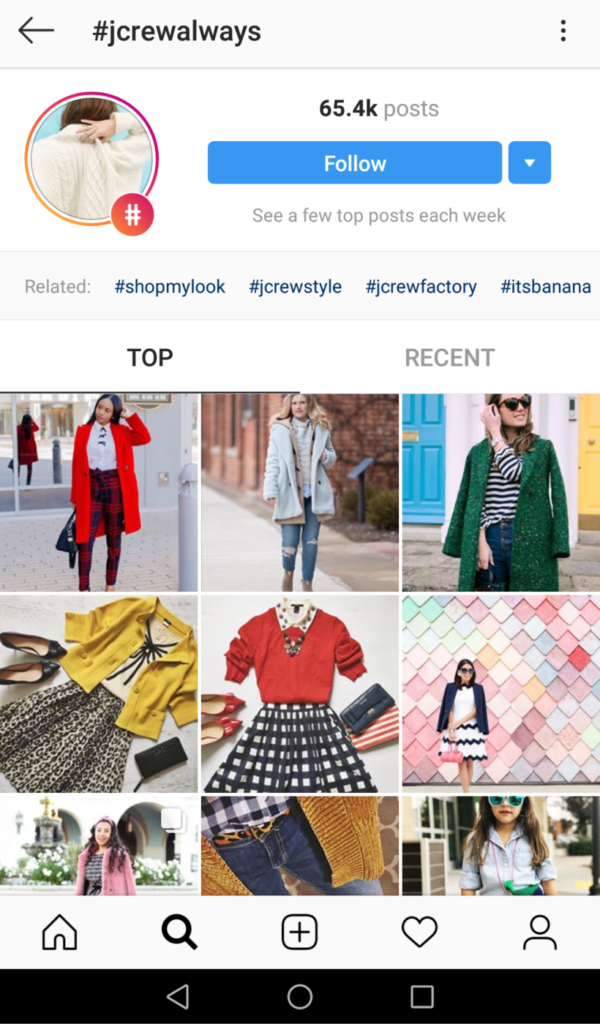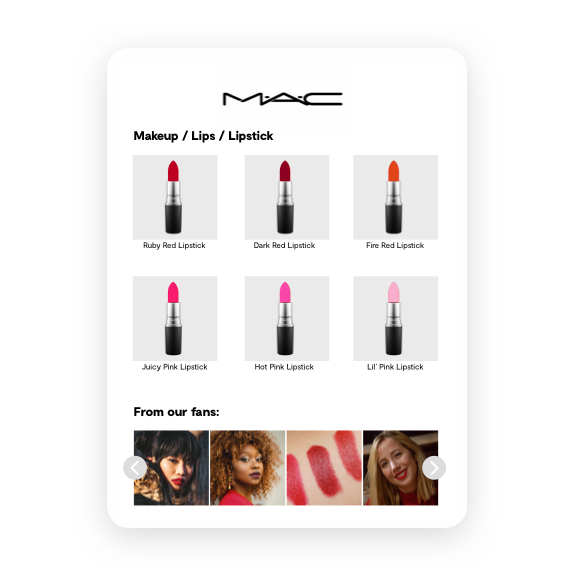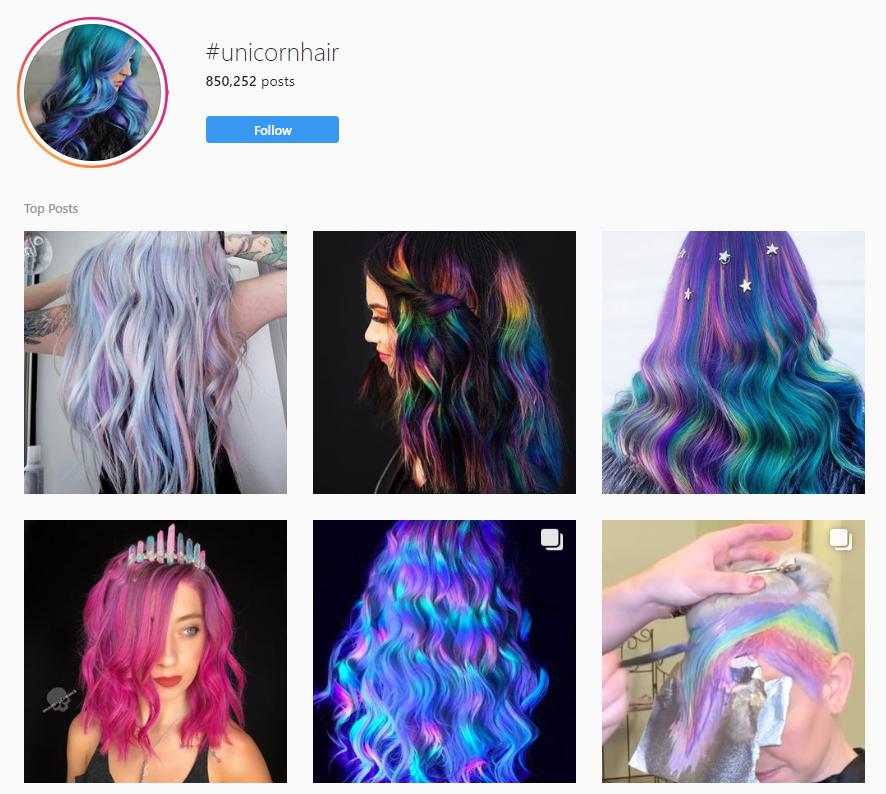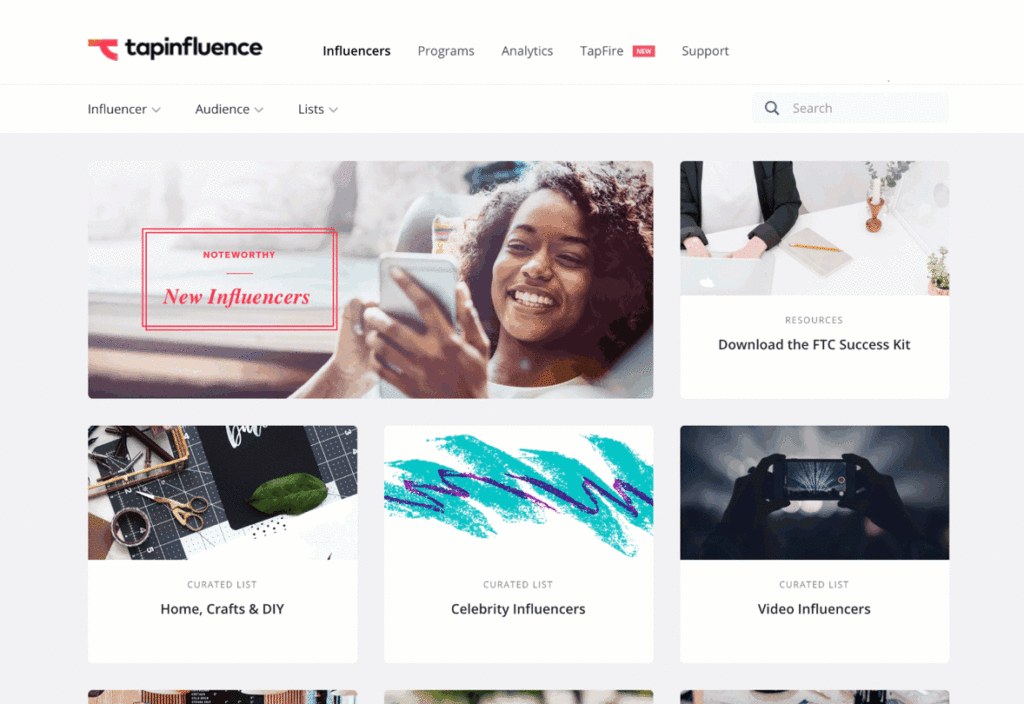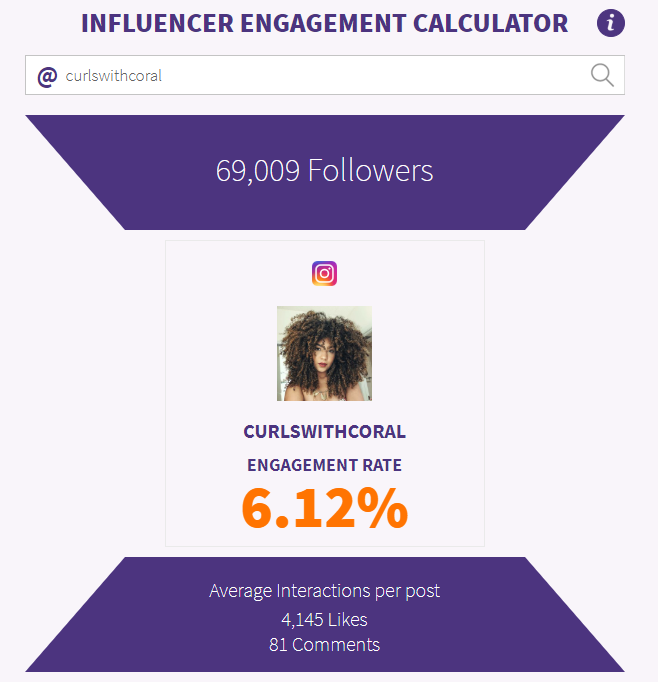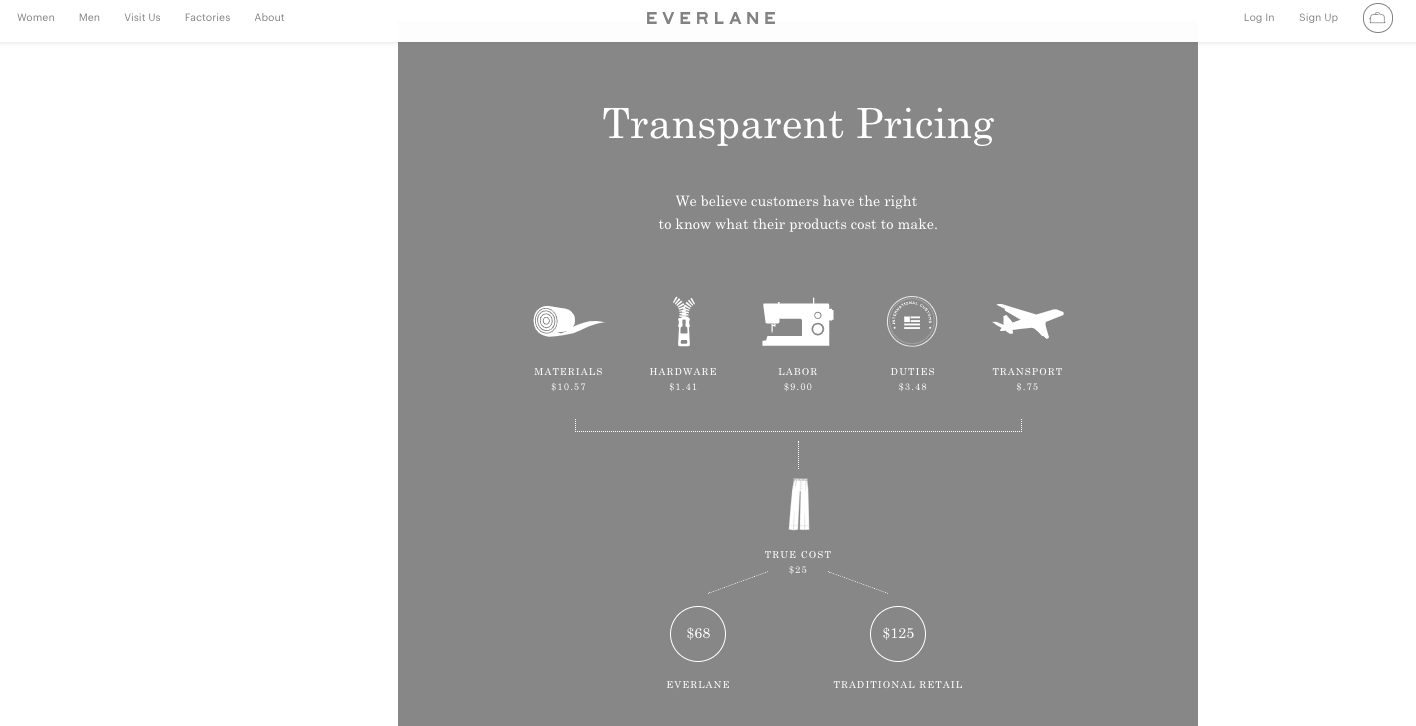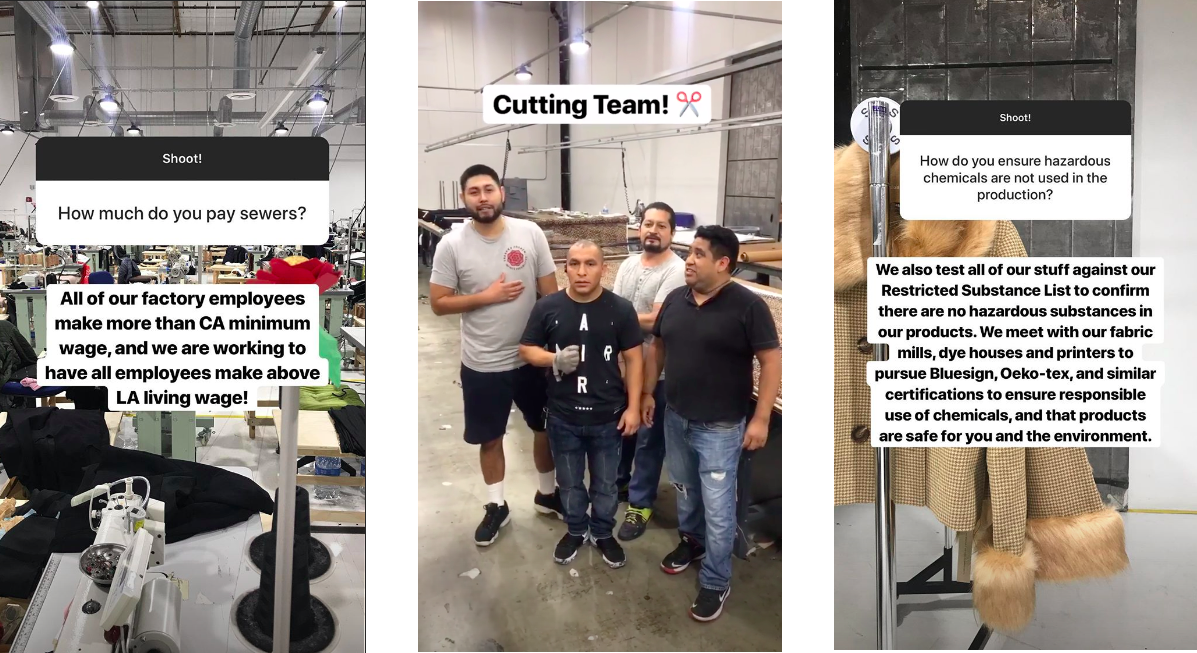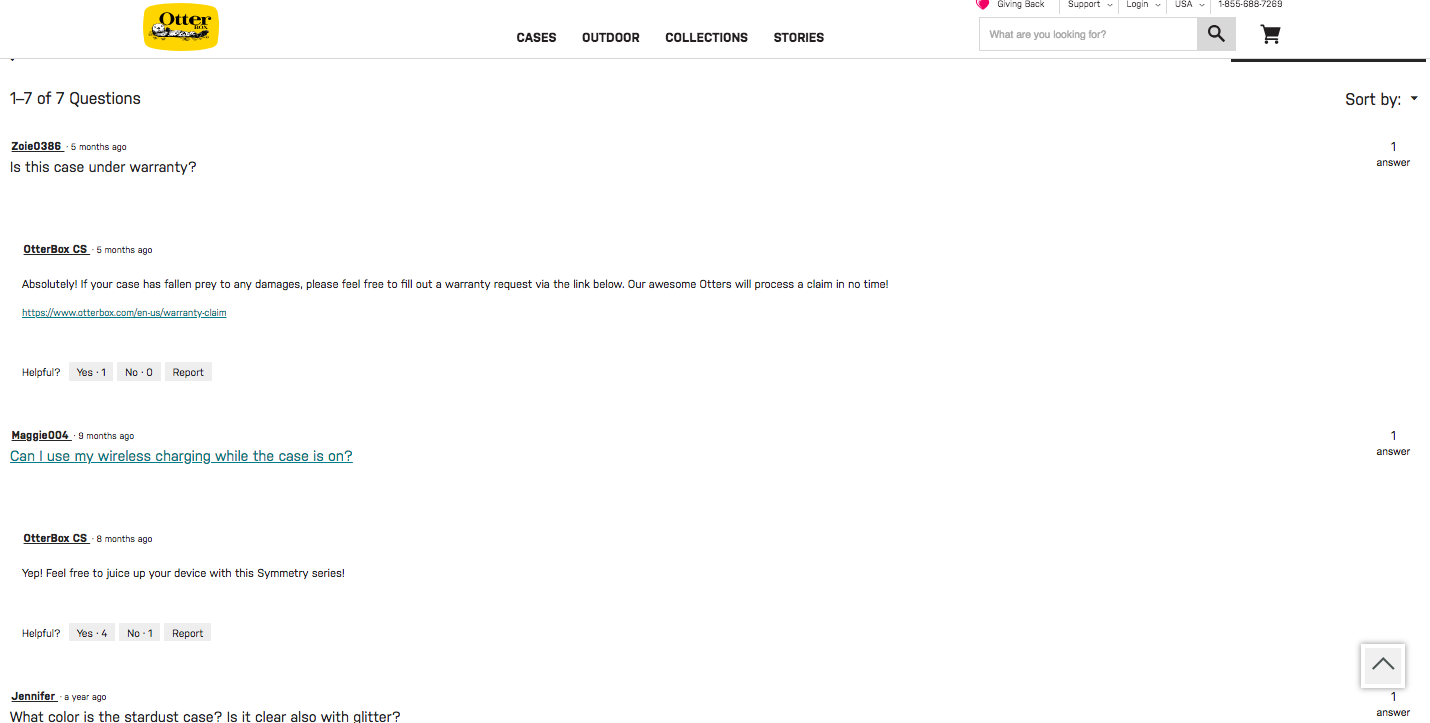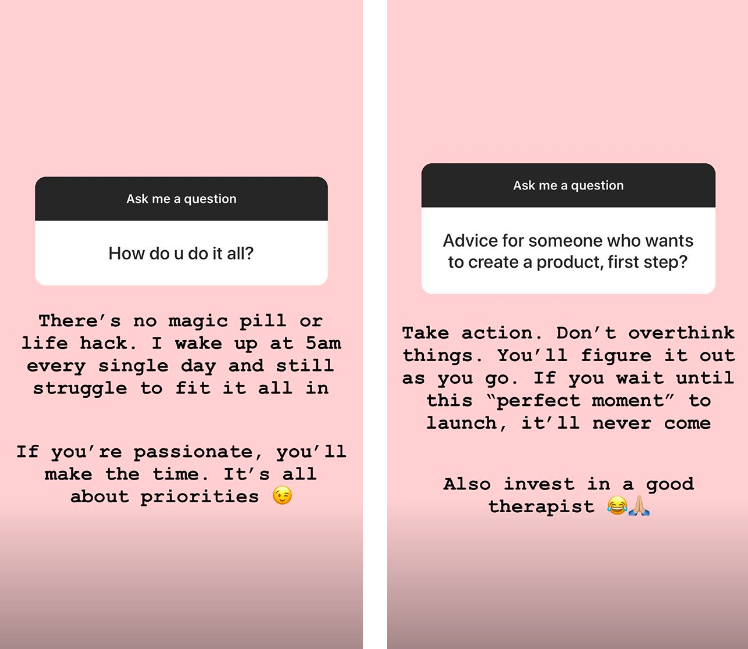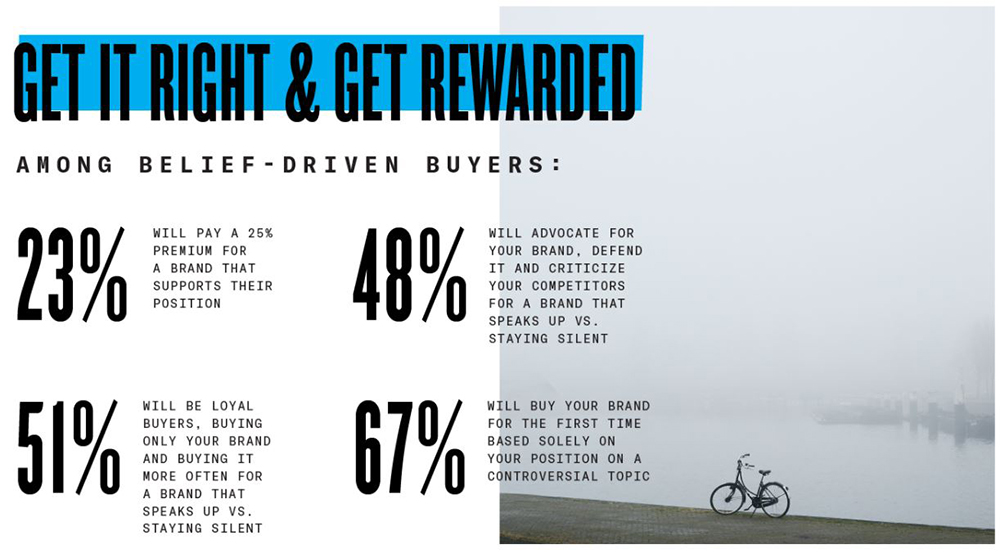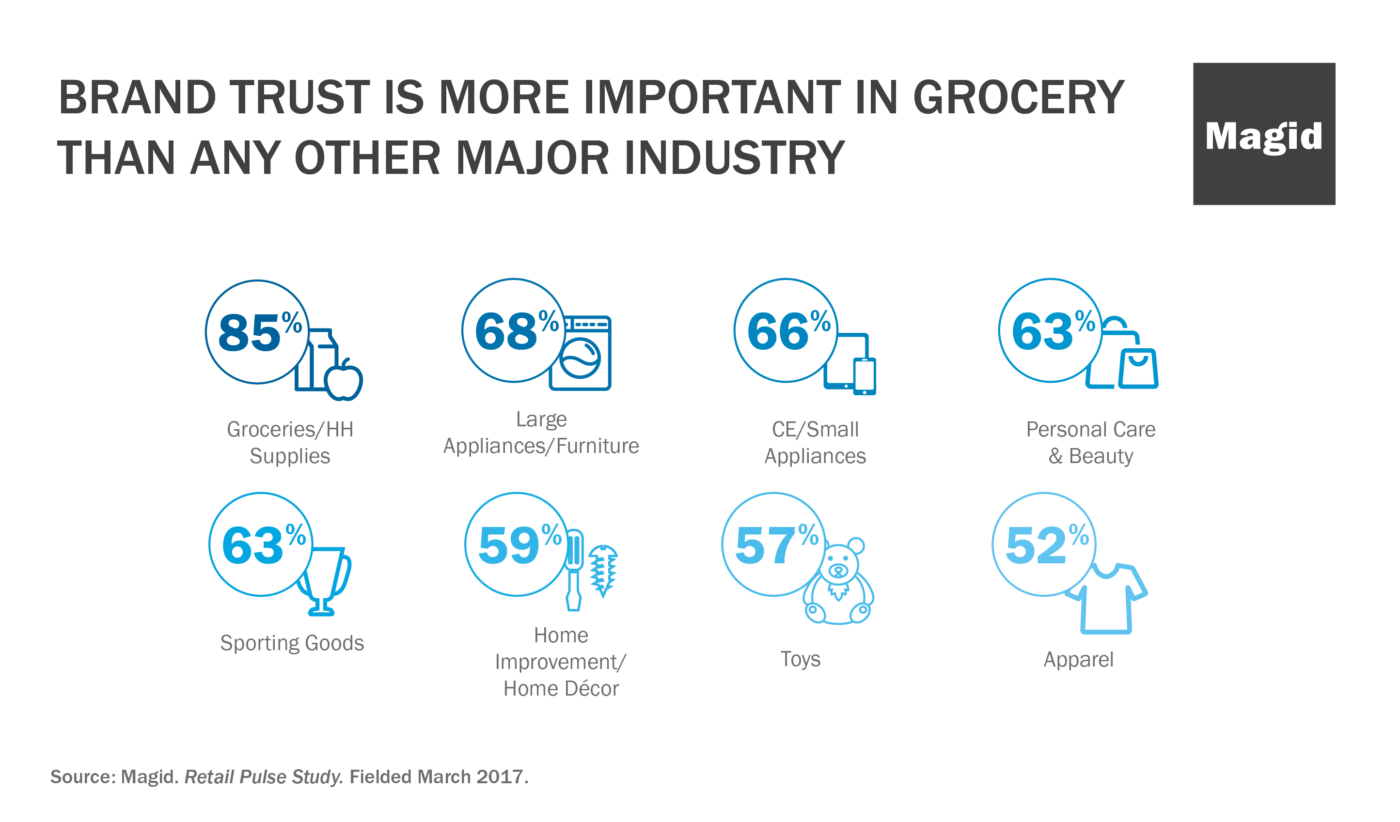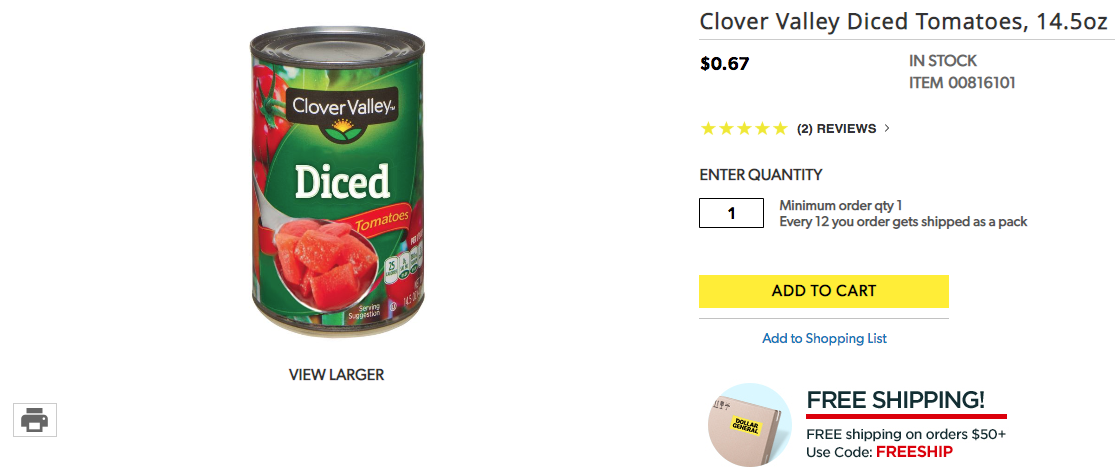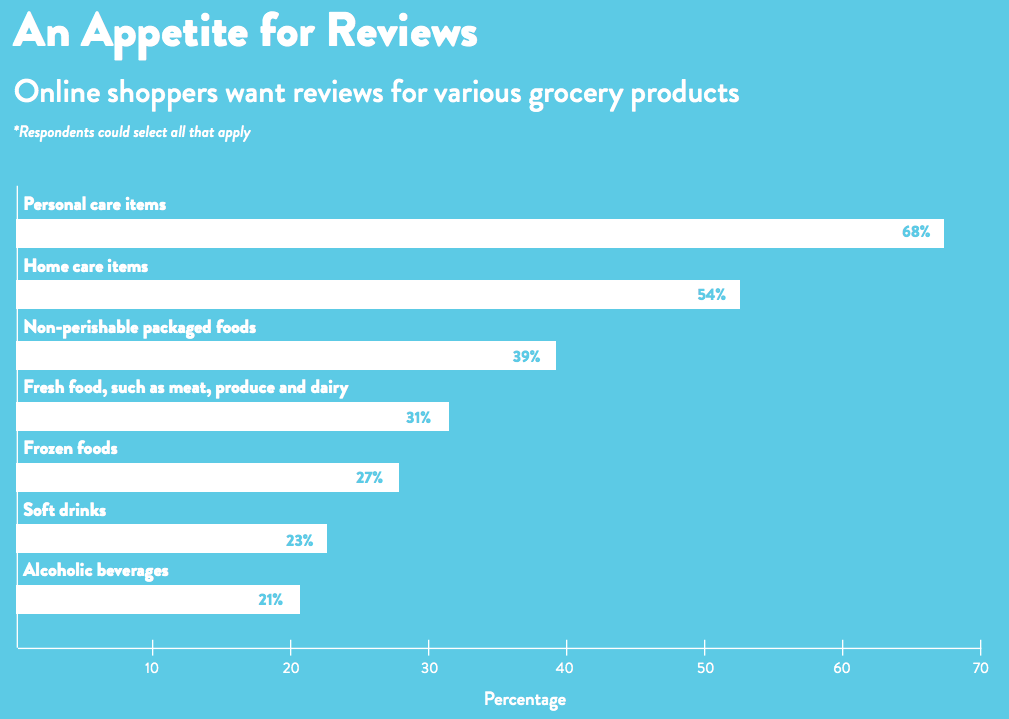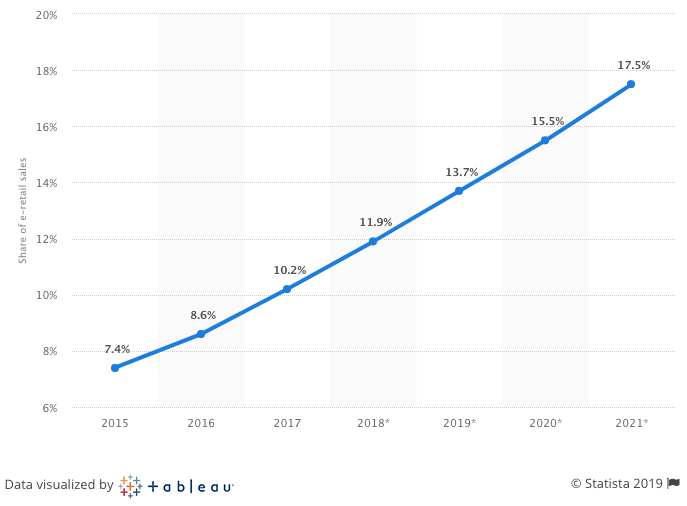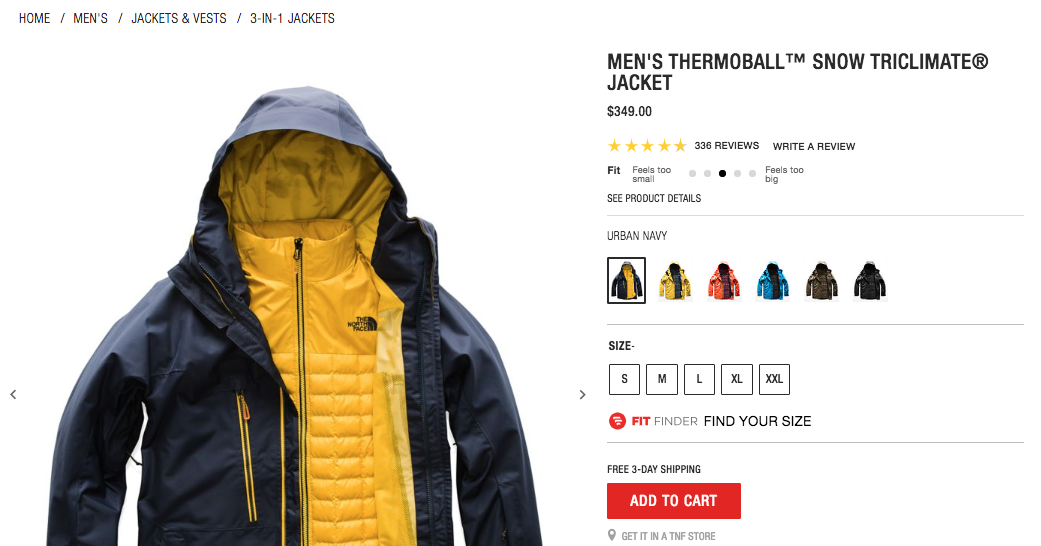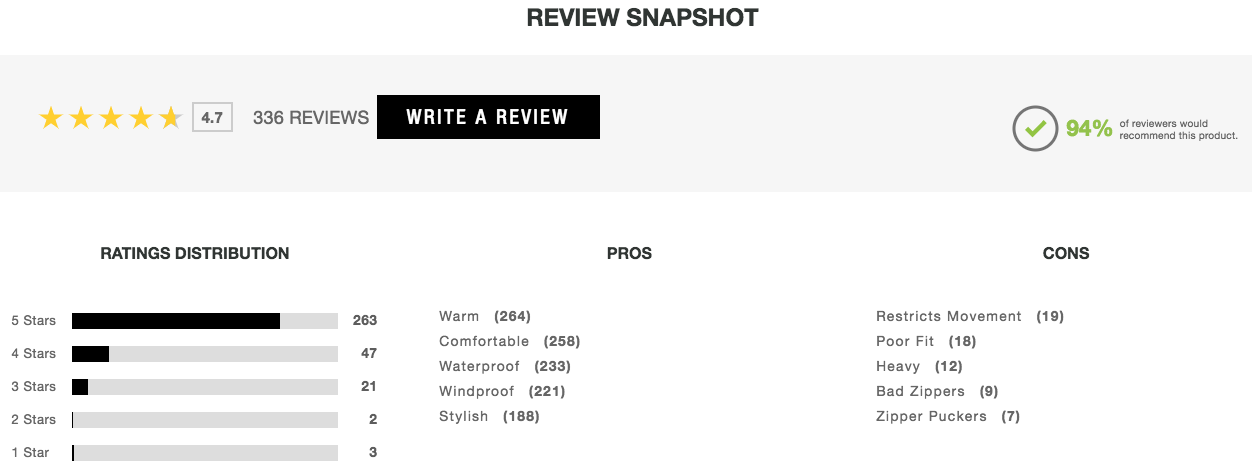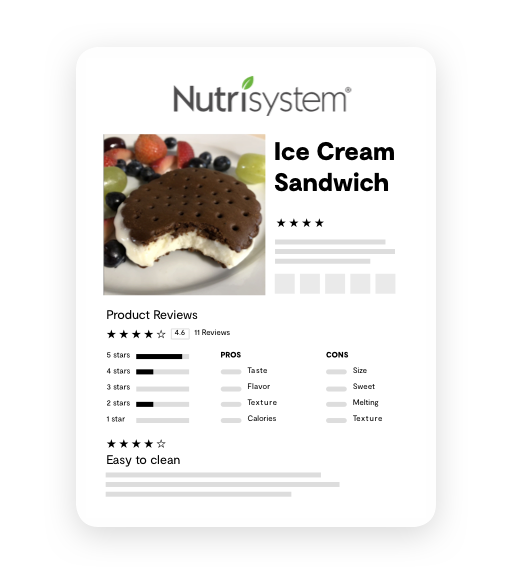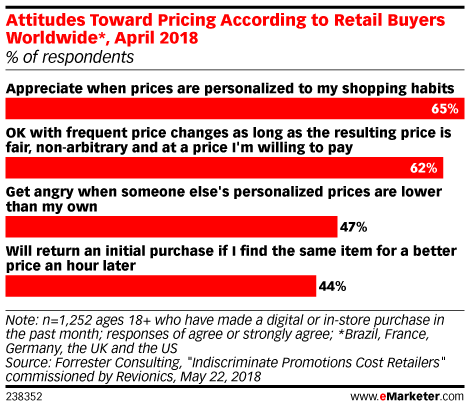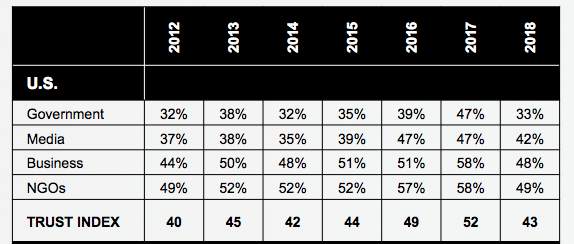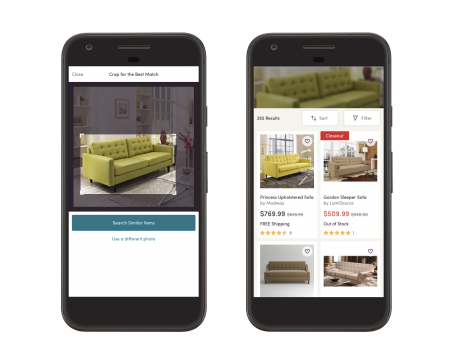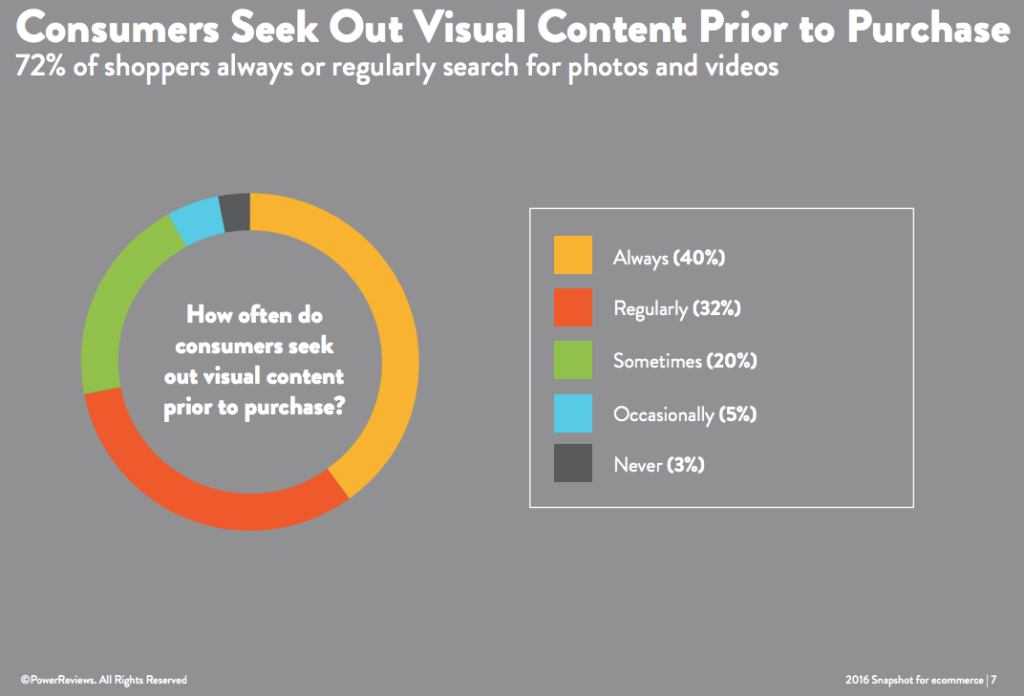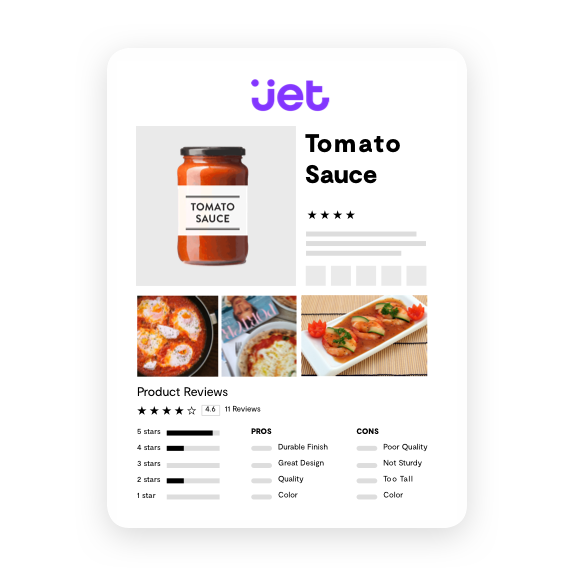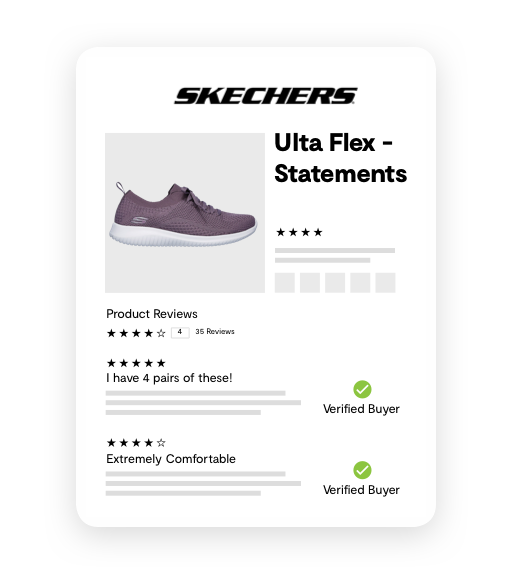If you asked a roomful of retail executives what keeps them up at night, we’d be willing to bet most would mention product returns. After all, Statista data projects product returns to be a $550 billion problem for U.S. retailers by 2020.
And while estimates for overall return rates vary, data from B-Stock Solutions found up to 13% of in-store holiday purchases are returned. As for online purchases, that number is closer to 30%.
Yikes.
What’s worse is when a customer returns a product, there’s more to lose than the cost of the product itself. First off, there’s the cost of shipping. An NRF study found that 75% of consumers expect free delivery on online purchases, even if the purchase is less than $50.
So there’s a lot of pressure to offer free shipping, but as retailers already know, it’s risky. Shoppers are more likely to purchase products they’re not so sure about if they know shipping is free. And if the product is returned, the retailer is still forced to pay shipping both ways.
Even though some industries retag and sell returned products for full price, others are forced to resell products at a fraction of the total cost. What’s worse is some have to toss products in the trash.
It’s also important to know product returns cost you customers. If a shopper has a negative experience, they may not consider you again.
That’s bad news because data shows it can cost five times more to attract a new customer than to retain an existing one. Clearly, product returns come at a big price for retailers.
But there is good news!
There are ways to limit returns, reduce confusion and keep your customers happy. See our seven ways to greatly reduce your product returns once and for all:
1. Beef Up Your Product Descriptions
In-store shoppers have the benefit of experiencing products firsthand before making purchases. They can feel the fabric of a sweater or hold a bottle of perfume to understand size. Online shoppers can’t.
Instead, they depend on product descriptions to find items that best fit their needs. Well-written product descriptions help your customers make smart purchase decisions. Poor product descriptions frustrate shoppers and leave you with more returned merchandise.
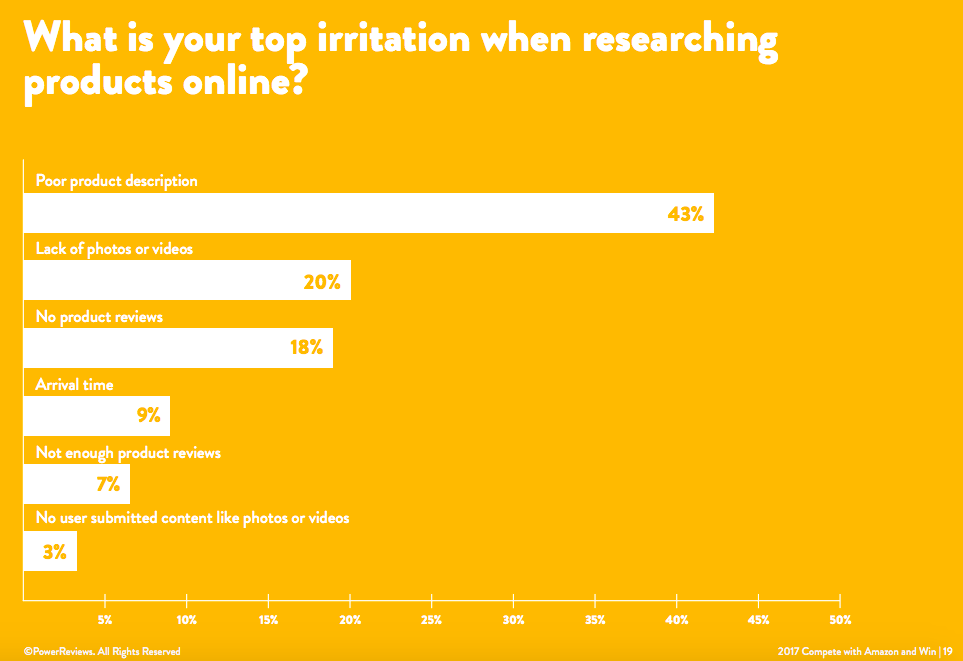
The PowerReviews How to Compete With Amazon and Win report found 43% of shoppers cite poor product descriptions as their top irritation when researching products online. Additionally, 48% said their top irritation post-purchase is that the product didn’t meet their expectations.
This proves the importance of providing shoppers with plenty of details about products. If you haven’t revisited your product descriptions lately, now’s the time.
What Your Product Pages Need to Eliminate Second Guessing
You know you need quality content to increase the path to purchase. That’s why you want to make sure your product pages clearly and comprehensively communicate the features and benefits of your items. You want them to be easy to read–regardless of the device the shopper is using.
Product reviews and questions submitted via Question & Answer software can help you identify ways to enhance product descriptions. For example, home furnishing brand Room & Board, noticed similar themes in the questions that were being asked about products in the bedroom category.
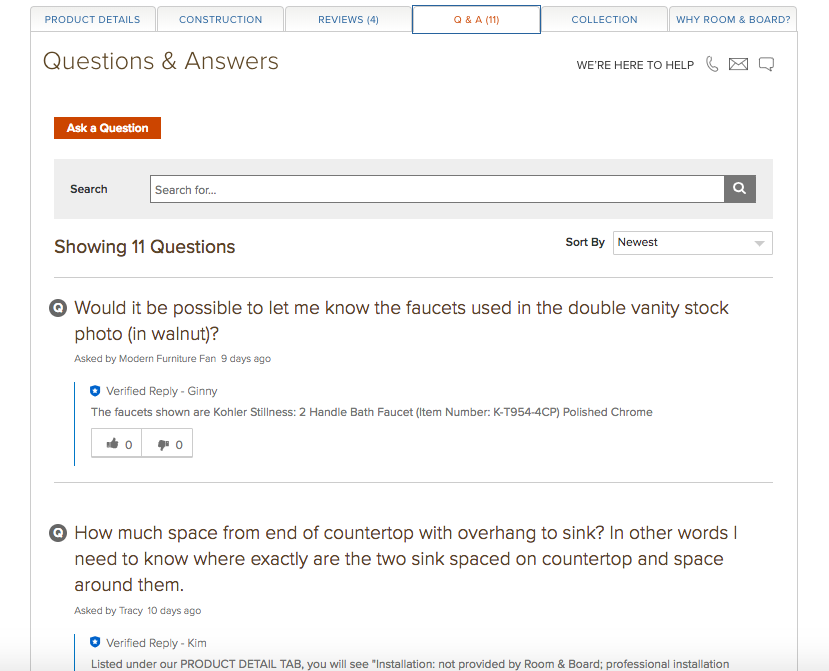
The company used this information to provide additional content to product pages in this category. Quickly, the brand saw a decrease in the number of questions asked about these products.
Remember to write descriptions that put your products in the best light, but you shouldn’t overstate your products’ capabilities. If you do so, shoppers will be disappointed when the product doesn’t live up to the description. In fact, they’ll be more likely to–you guessed it–return the product.
2. Focus on Great Photos & Videos
Visual content plays a large–and growing–role in the path to purchase for most of today’s shoppers. Baymard research found average consumers want to see between 3 to 5 images of a product to better understand what the item has to offer before making a purchase.
Provide plenty of photos and videos of your products to help shoppers understand what to expect when it arrives in the mail. That way there’s limited surprises for the shopper and fewer product returns for you.
Start by revisiting your professional product photos. Ensure you’re providing several images of each product that are shot form a variety of different angles.
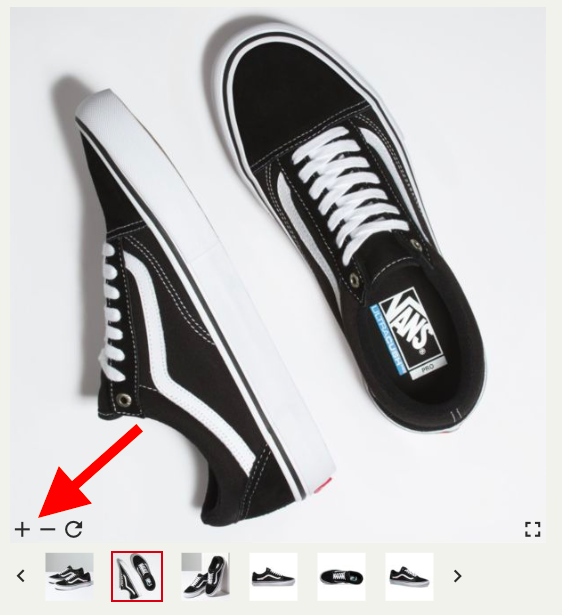
Like Vans offers here, allow shoppers to zoom in on photos so they have a clear picture of the product’s details. You don’t want a customer to return a jacket just because they don’t like the buttons!
While your professional photography is important, remember that more shoppers want to see photos and videos submitted by others like them. The PowerReviews Snapshot for Ecommerce report found 88% of consumers specifically look for visual content submitted by other consumers prior to making a purchase.
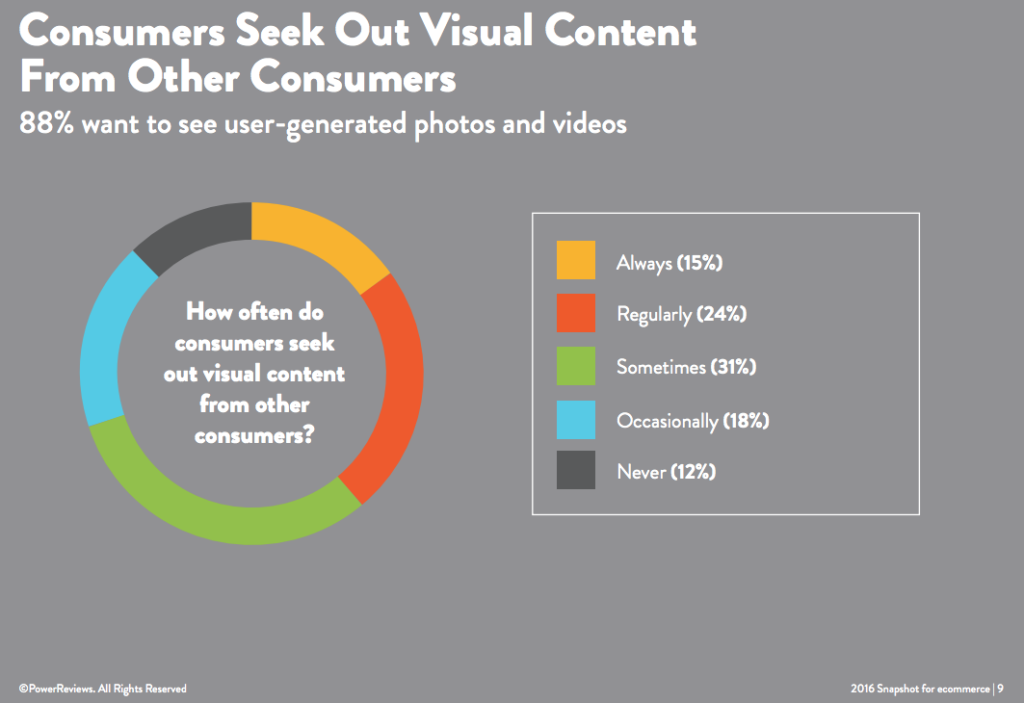
While user-generated visual content helps with conversion, it also allows brands and retailers to reduce product returns. Shoppers better understand what a product looks like in “real life” when it’s used by real people.
Trust Your Visuals
For example, let’s say a shopper is looking for a dress for an upcoming wedding. She finds one she likes, but the model in the professional photos looks shorter than her.
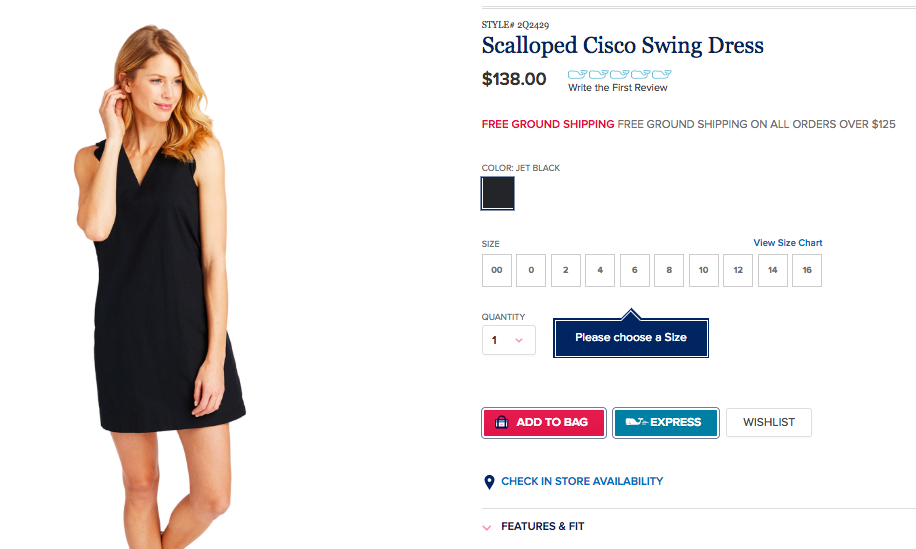
The shopper looks through photos submitted by other customers who have purchased the product and finds a handful of content with others around her height. She doesn’t like the length of the dress on taller shoppers, so she opts for a different dress that likely has a better fit.
It might seem simple, but the retailer just avoided an unnecessary product return that most consumers would’ve taken a guess in the dark. If you’re not already doing so, start collecting unique user-generated content such as photos and videos from your shoppers.
https://www.instagram.com/p/Bka8oI5nnRj/
Use this content directly on your website and on your Instagram. With the help of the PowerReviews Visual and Social Suite, this valuable content is loaded directly on your product pages to give shoppers realistic expectations of your products. Not only can you collect and display this unique content, but our tools allow you to easily ask for permission to use it on your site.
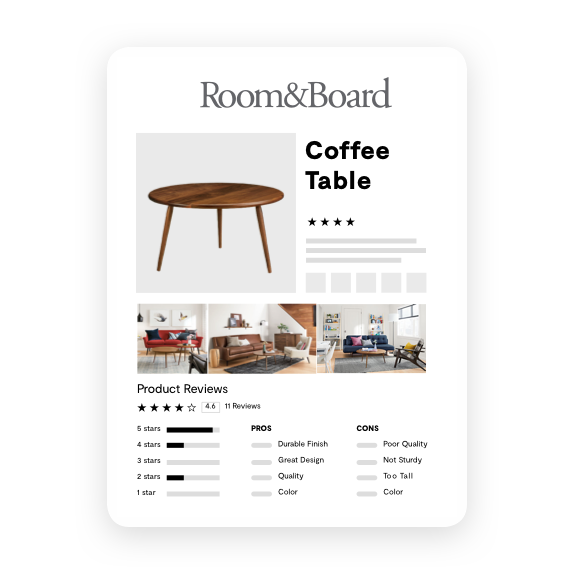
As Instagram marketing influencers continue to grow, you have to make sure you get the rights before publishing.
3. Collect & Display Product Reviews
We shouldn’t have convince you too hard, but product reviews are essential.
How much so?
Our data shows a whopping 97% of consumers use ratings and reviews when making purchase decisions. Reviews help steer consumers toward products that fit their needs. And they also steer them away from products that don’t–reducing the number of product returns you receive.
Consider this example. There’s a consumer shopping for a new hairdryer. The consumer has curly, fine hair. She finds a hair dryer from our friends at Ulta that fits her budget and has an average star rating of 4.5.
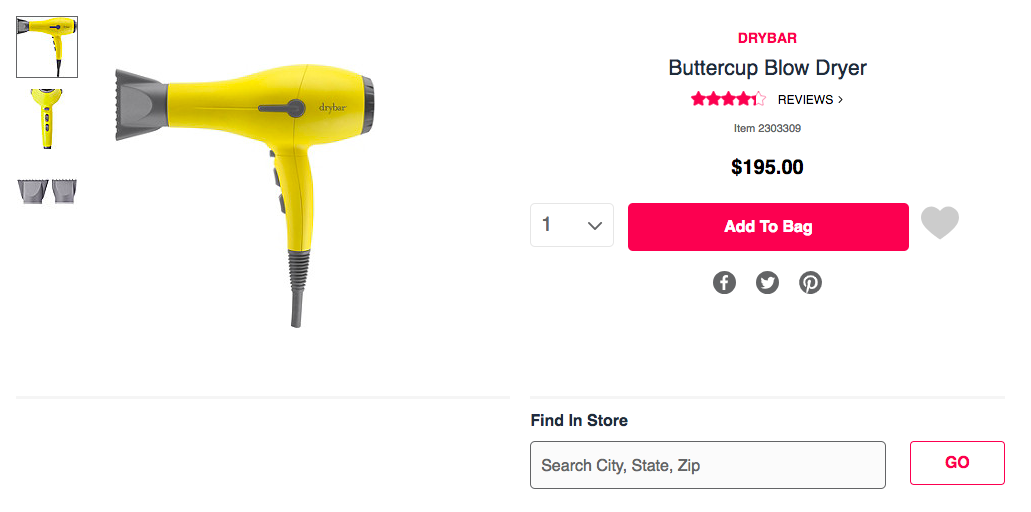
But before buying, she digs into some of the one star reviews. There she find a handful of reviewers mention the dryer works really well for their curly hair.
Instead of doing more digging, she has confidence in her purchase specifically due to the several mentions of the dryer working great for curly hair.

The hair dryer arrives, the customer loves it and you avoid an unnecessary product return. Make it easy for shoppers to leave reviews for the products they purchase. Prominently display this content on your product detail pages to help future shoppers identify the products that will (and won’t) work for them.
Want to see PowerReviews in action? Schedule a demo with our team to get started today!
4. Identify Trends in Negative Product Reviews
Product reviews are a great resource for brands and retailers wanting to improve the customer experience, gain better insights and reduce product returns.
If you notice that one of your items has a low average star rating, dig into the reviews to identify trends. For example, several reviews for a pair of low-rated jeans might mention the zipper gets caught.
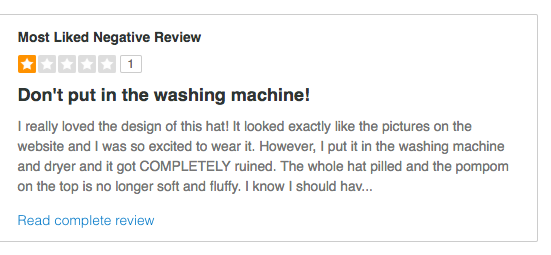
This could be a cause for a number of the product returns. You share this feedback with the manufacturer and work together to improve the product. Once the issue with the zipper has been resolved, shoppers are less likely to return the jeans.
Your ratings and reviews provider should make it easy to set up alerts when you receive a review below a certain star level or when a review includes certain keywords. They should also make it easy to share reports and feedback with the appropriate teams throughout your company.
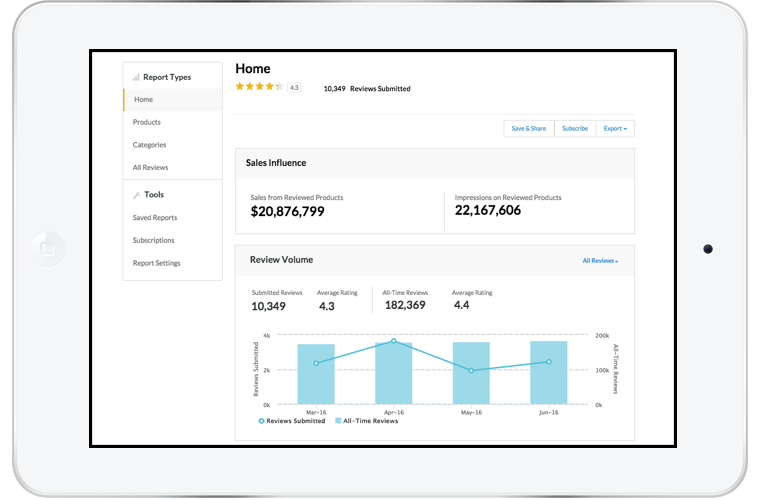
5. Highlight Size & Fit Info From Other Shoppers
Shoppers return products for a myriad of reasons. But for apparel and footwear brands and retailers, incorrect fit is one of the biggest reasons for product returns.
This isn’t surprising, as online shoppers can’t try on clothing or shoes prior to purchase. Shoppers can always purchase the size they typically wear, but we know that things can run small or large per brand.
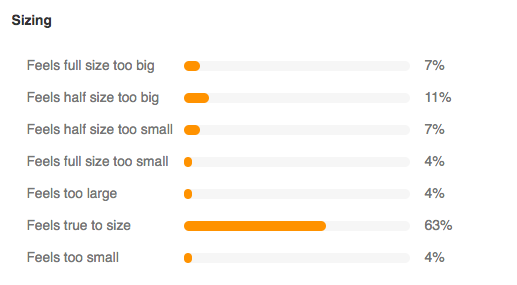
If you think your brand falls into that category, you can reduce size-related returns by helping shoppers identify the right size with relevant shopper information. You can do this by asking shoppers who write reviews to include information about the size and fit of the product.
For example, a review writer can indicate that a jacket is small, large or true to size. Once you’ve started collecting this peer-provided size information, prominently display it on your product pages.
In the example below, shoppers can see that the Rivno Jacket tends to run a bit small for others. With this information, customers confidently make purchases with the more reliable size and fit information about the jacket.
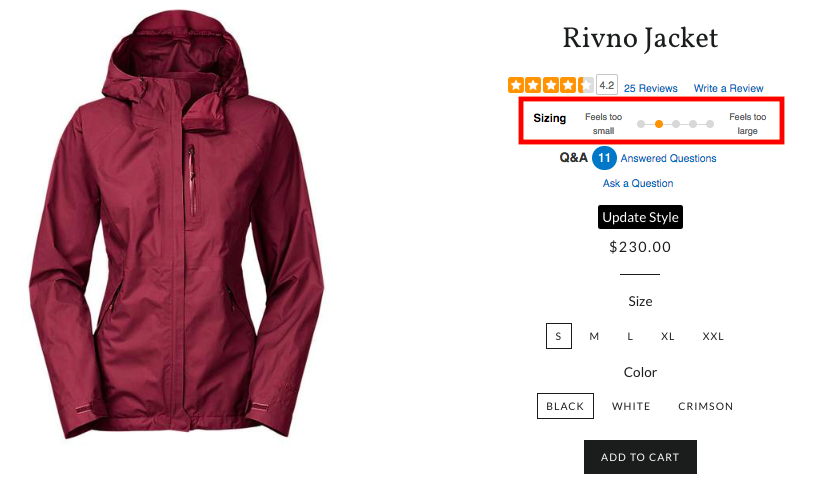
Be sure your ratings and reviews provider can display this customer information easily on your pages and that all the collected content is authentic.
6. Let Shoppers Ask Product Questions
No matter how comprehensive you make your product descriptions, consumers still have questions. Forrester research found half of shoppers abandon an online purchase if they can’t find a quick answer to their product question.
The other problem to know with this statistic is the other half of shoppers order the product anyway. And guess what? You’ll see a product return if it doesn’t meet their expectations and the retailer offers free returns.
Help your customers find products that fit their needs and avoid unnecessary returns. Make it easy for people to ask questions about your products that aren’t answered in your product descriptions.
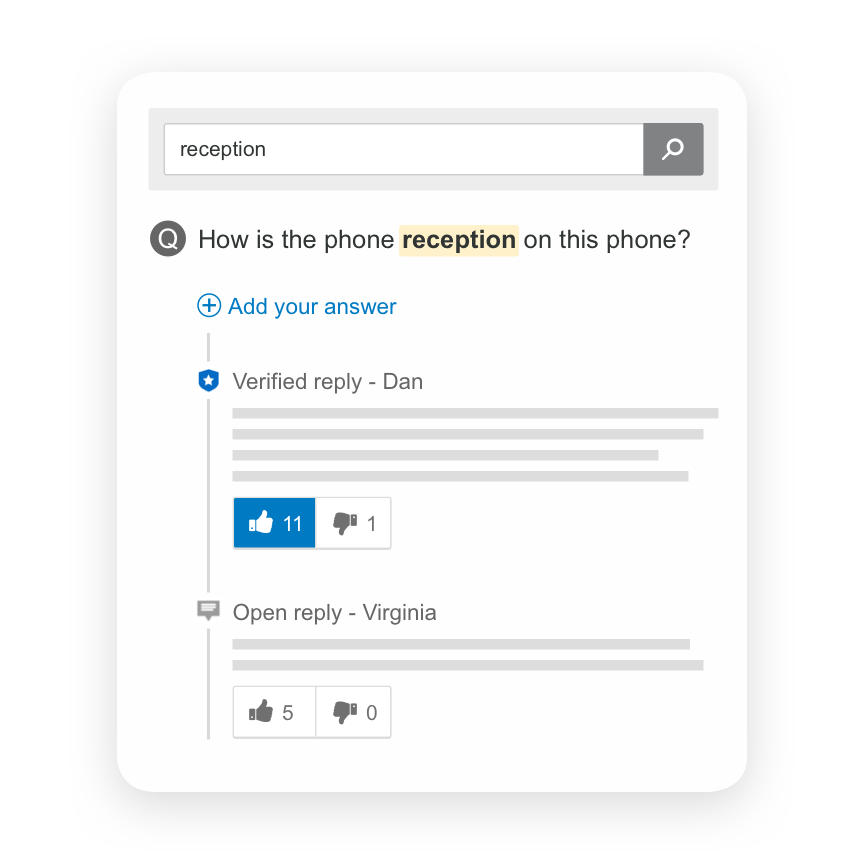
One easy way to do this is to add Question and Answer software to your product pages. Shoppers submit questions they have about your products, and they get answers by brands, retailers or even by other verified customers.
Make sure your Q&A software provider offers a search feature that allows shoppers to check if a previous buyer already asked a similar question. That way your customers get even faster answers to their questions.
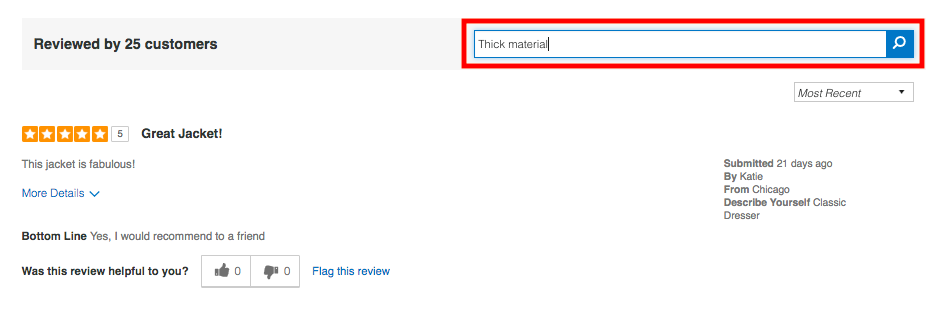
This gives consumers quick and clear expectations of what to expect from a product when it arrives.
7. Solicit Feedback From Shoppers Returning Products
When a shopper returns a piece of merchandise, don’t miss out on an opportunity to understand why. Understanding why shoppers return items helps you identify ways to improve products and experiences. This will even help reduce future product returns.
Make sure you ask for the reason of the return from the customers while it’s still fresh in their mind. For example, perhaps the jacket didn’t fit or maybe there was a product defect.
By asking the right questions after they’ve returned the item, people will give you insightful feedback. And more than likely, these consumers will appreciate the fact that you’re wanting to improve their experience.
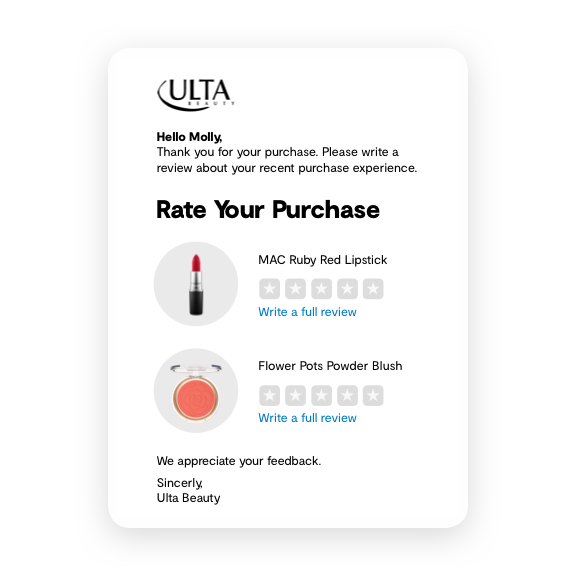
Try to identify the products that get returned most and analyze the reasons why they are returned. When several shoppers indicated poor fit, there’s an opportunity for you to add information, resources and tools to your product pages to determine the right size to order.
Say there are several others mentioning product defects, try to work with your manufacturer to provide helpful customer sentiment analysis data. If you don’t provide them with feedback and product return data, how will they improve the products?
Start Reducing Product Returns Today
The key to reducing product returns is to provide shoppers with all of the information they need to identify the products that will fit their needs. Don’t let a lack of product information be the downfall to a major release or overall sales.
Ready to learn more about how you can start leveraging user-generated content like ratings, reviews, Q&A, photos and videos to help your shoppers make smart purchase decisions–and help you reduce your return rate? Contact us to schedule a demo today!




